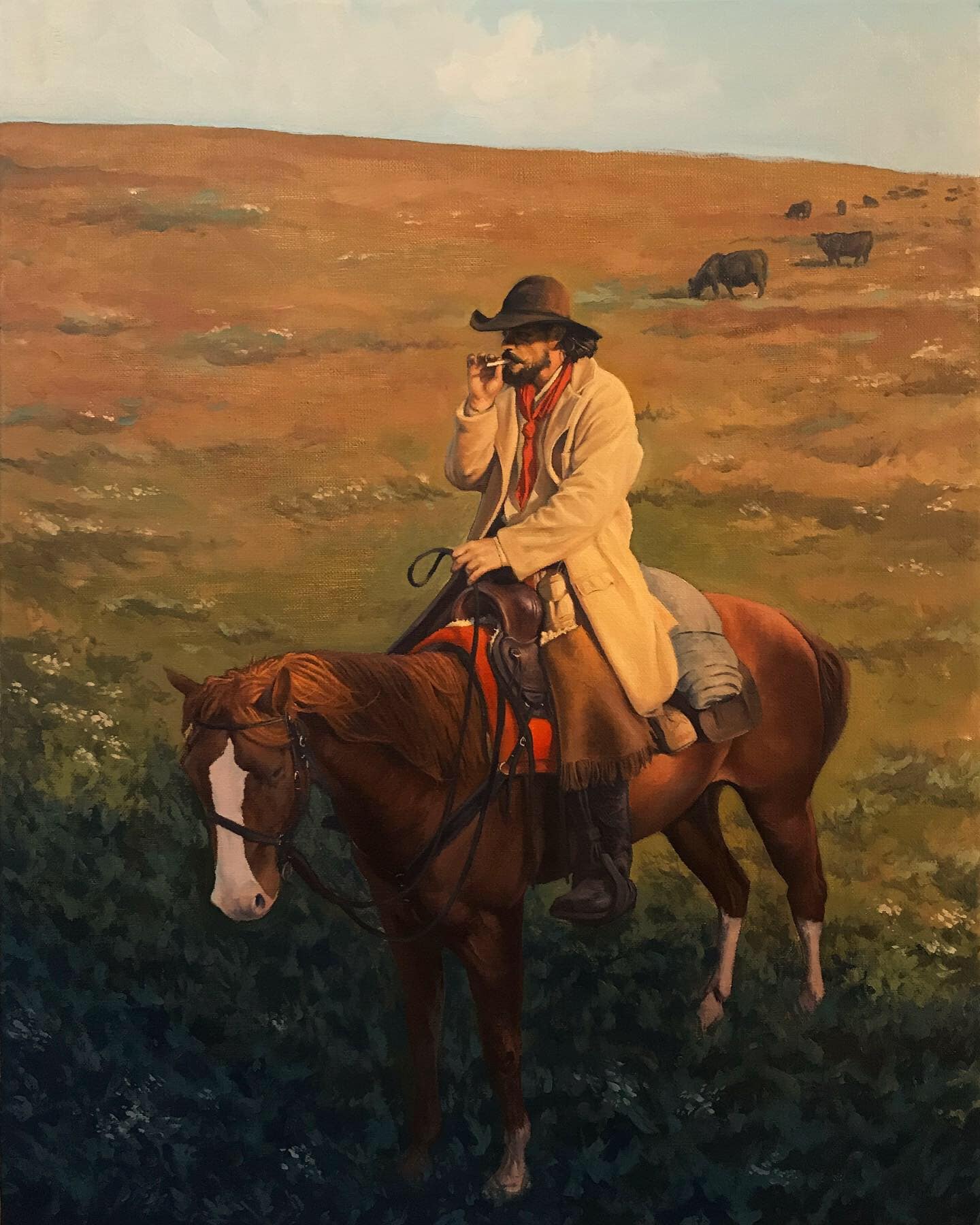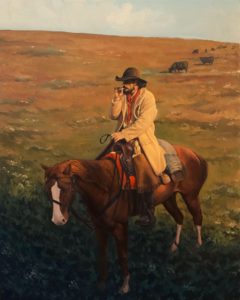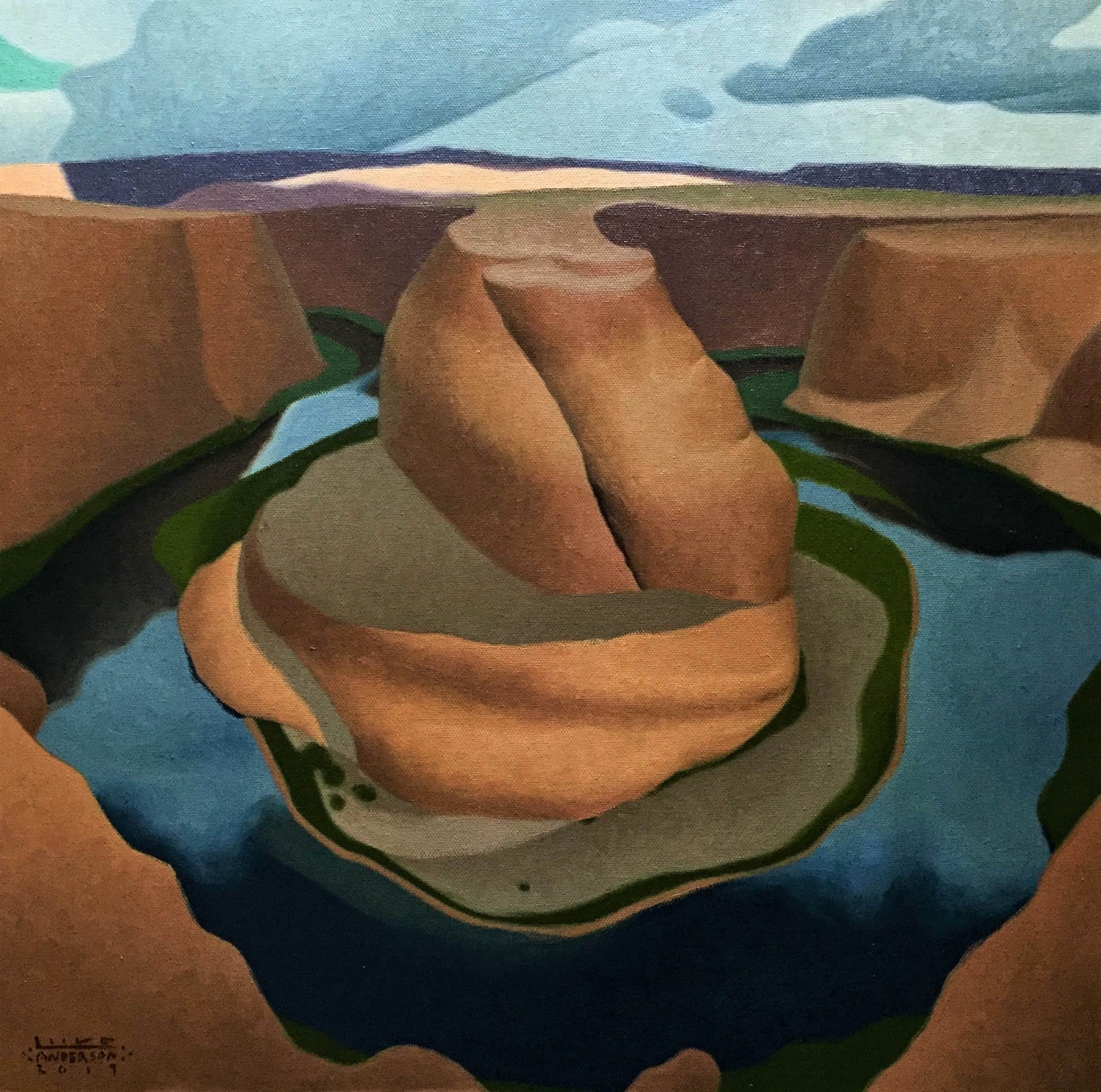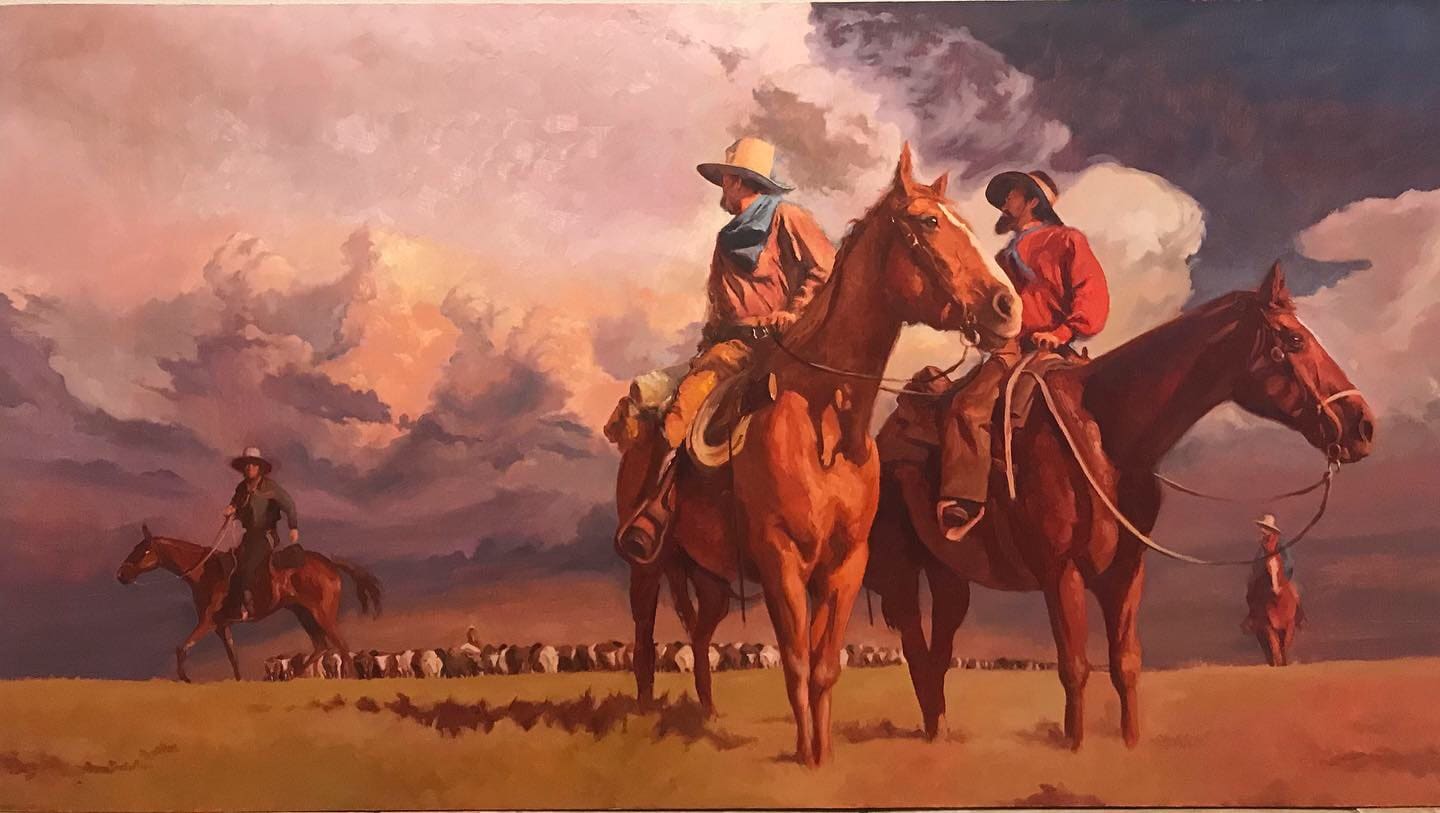Dan Stovall // @danstovallart
Statement
“The three images I’ve selected show various people at work in the Kansas prairies of the early West. All are somewhat “timeless” in that they shouldn’t be able to be placed in a specific year in the past or present, and show different attitudes towards the landscapes and setting they are placed in, and the work they are doing.
The first and smallest painting “Drag Rider” shows a somewhat disgruntled looking cowboy taking a smoke break. In a cattle drive, the Drag position is one usually taken by newer cowboys and involves staying behind the main column, always in the dust and dirt and rounding up anything that gets lost or left behind. They usually cover much more ground than any other position. The rider’s posture in the painting is stoic and his eyes look away from the center of the painting and the scenery behind him. The west to those who live in work in it like this is not always something to be admired and taken in for its beauty, at least in moments like these shown.
“Lakota Scouts” shows two Lakota men on horse back slowly making their way through a high grass prarie looking for sign. The stillness and calm of the riders in the early morning light sits starkly against the energetic sunrise behind. The curving clouds mimic the line of the horses head bowing while pulled by the reigns, and the stars align directly over the heads of the horse and rider, connecting them to the earth they are observing and the sky overhead. Wether they are out hunting or have been hired, these men are connected to and observe the land they are a part of.
“The Evening Redness in the West” (title borrowed from one of my favorite authors) shows another cattle drive but from the front positions looking back. The trail boss, who would be the one to make decisions on where and when a drive is going on the trail, is consulting his wing and point riders on the storm building behind them. The sky behind the cattle is bathed with the same warm evening light that covers them, and the beauty of such a storm building might, again, not be something to be admired and taken in to those in front of it.
I hope to show that our views from outside the West of the past and present can differ greatly from those who lived and worked in the places and situations we idealize in our collective memories and artwork.” – Dan Stovall








